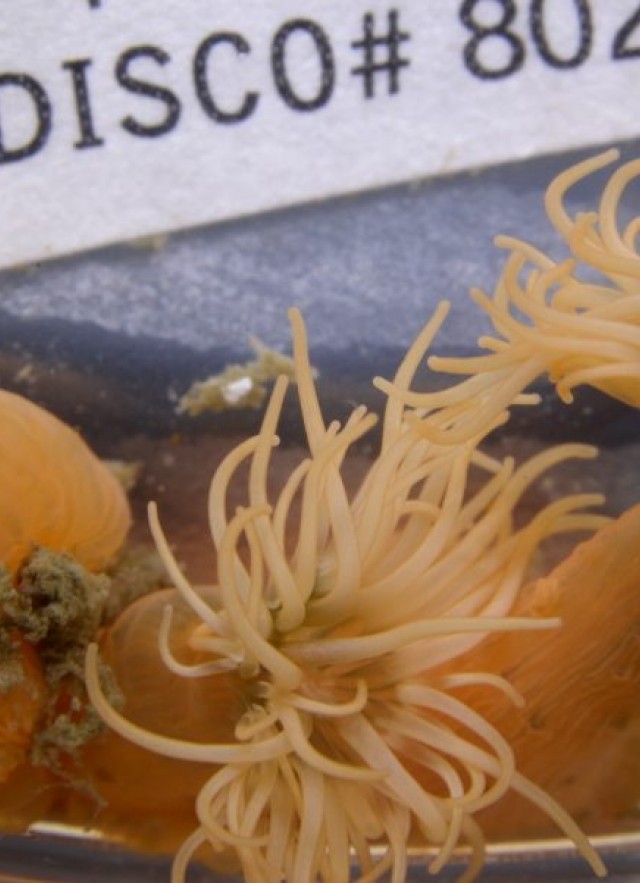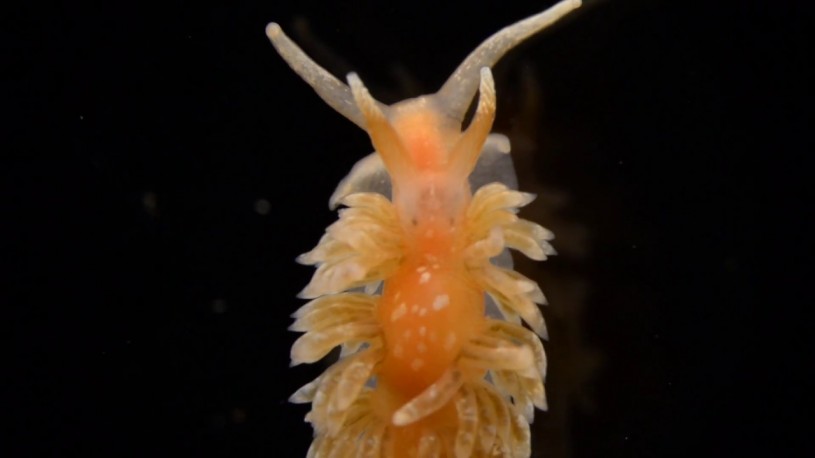Tiny Marine Marvels
DISCO collects specimens down by the docks

What sorts of animals can you find living on a dock in the Port of Los Angeles? So glad you asked, because we have the answers for you. At a recent Fellows in Focus event, the team from the Diversity Initiative for the Southern California Ocean headed to San Pedro to search for critters along the docks and then set sail on tall ships for the evening.
What they found are tiny marine marvels, a reminder that some of the most elegant creatures in the ocean are so small you might miss them if you’re not looking closely.

This bright orange fellow is a nudibranch, also called a sea slug. It’s just about a centimeter long, and like all sea slugs, it’s a mollusc. Molluscs are a very diverse group of invertebrates that includes snails, slugs, clams, squid, and octopuses. (Told you it was diverse!) This particular species, Anteaeolidiella oliviae, is mostly nocturnal and feeds on small sea anemones, and as far as we know, they’re only found on the coasts of California.

This nudibranch is called a colorful aeolid, which is an easier way to say its full scientific name, Anteaeolidiella chromosoma (chrom is Latin for “color”). Watch this little sea slug in action, crawling along on a dish in the lab. In closeup, you can see its little beating heart. Finally, the slug indulges itself in a popular nudibranch habit — crawling upside-down on the surface film of the water.
